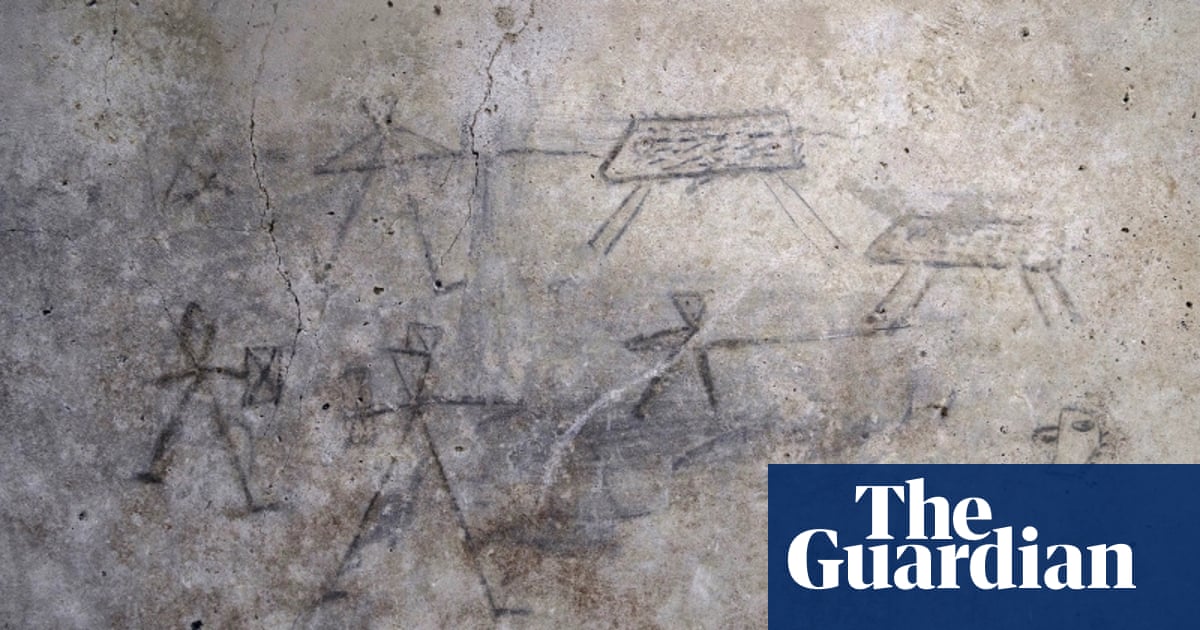Drawings of gladiators believed to have been made by children inspired by watching battles at Pompeii’s amphitheatre are among the latest discoveries in the ruins of the ancient Roman city.
The charcoal drawings were found during excavations at I’Insula dei Casti Amanti, a cluster of homes in Pompeii’s archaeological park that opened to the public for the first time on Tuesday.
Other drawings found on a long wall include the outline of three small hands, two figures playing with a ball, a hunting scene of an animal that appears to be a boar, and a scene that depicts two boxers lying on the ground.
Gabriel Zuchtriegel, the director of Pompeii’s archaeological park, said the drawings were probably done by one or more of the children who played in what was a courtyard before the city was destroyed by the eruption of Mount Vesuvius in AD79.
He said: “Together with psychologists from the Federico II [university of Naples], we have come to the conclusion that the drawings of gladiators and hunters were made based on a direct vision, and not of pictorial models. They had probably witnessed battles in the amphitheatre, thus coming into contact with an extreme form of spectacularised violence.”
Archaeologists also discovered the remains of two victims of the eruption that were found by the door in the House of the Painters at Work, named as such because the home is believed to have been undergoing a repaint at the time of the disaster.
The Italian culture minister, Gennaro Sangiuliano, said: “More and more, Pompeii is revealing wonderful new discoveries that confirms [the site] as an extraordinary treasure chest.”
after newsletter promotion
A banquet room replete with well-preserved frescoes depicting characters inspired by the Trojan war were unearthed during a dig in April. Other discoveries over the last year include a home containing a cramped bakery where enslaved people are believed to have been imprisoned to produce bread.
The Pompeii ruins were discovered in the 16th century and the first excavations began in 1748. Pompeii is the second most visited archaeological site in the world.

